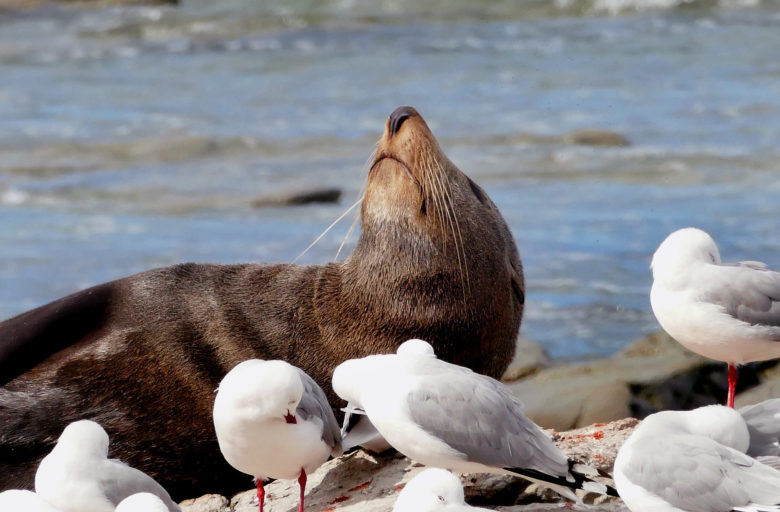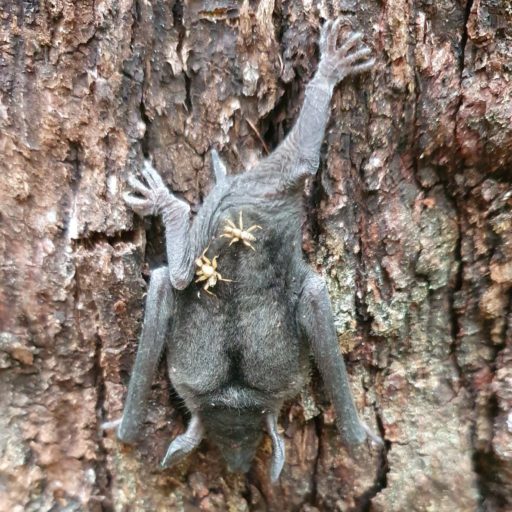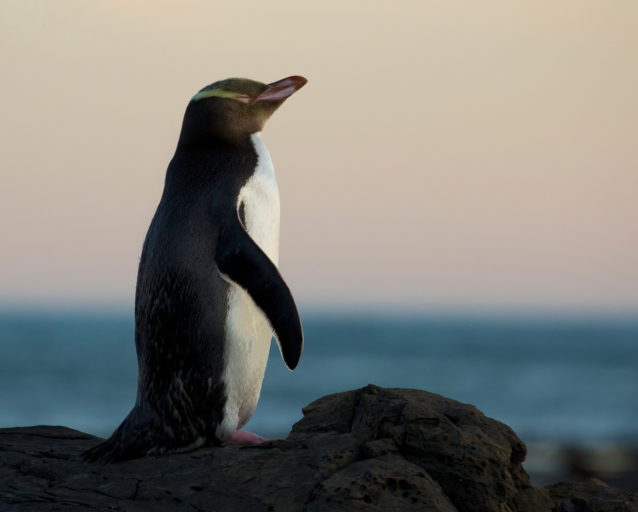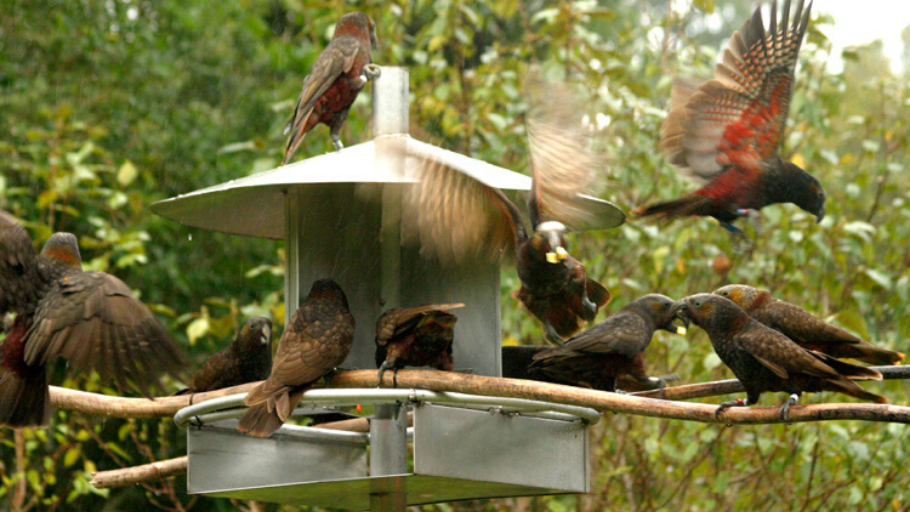ON THIS PAGE
What is governance?
CommunityNet Aotearoa defines governance as ‘the job of the governing body, such as a committee or board, to provide direction, leadership and control’. In a nutshell, governance is how a group is run.
As a community group grows, people’s roles will become more distinctive within the levels of operation. Once funding is received and staff are employed, the group also becomes accountable to stakeholders and it’s important to have more formal systems in place. Each group will have its own system, but good governance is essential. It’s about working towards your goals while also functioning well on a day-to-day basis.

Governance and management: what’s the difference?
Governing officers look at the bigger picture, including strategy, policies, funding and processes. Meanwhile, in large organisations the more practical, day-to-day side is run by the management team, led by a co-ordinator, general manager or CEO. The management team is in charge of project management and delivery, as well as staff and/or volunteers.
For small groups, these roles are likely to be less clearly defined. In those cases it’s worth dedicating time in each meeting to governance and strategy before moving on to the operational side. It can help to be very clear from the outset what level of operational detail governance officers should be involved with. For example, a governing officer may also be involved in trapping. They could also be from agencies that provide funding, such as councils or DOC.

Whatever the size of your group, there should be a clear understanding of everyone’s roles and responsibilities as well as ongoing communication between members. If members have multiple roles, they may need to make clear which role they are performing when doing certain tasks.
The conservation world in New Zealand is quite small, which means people are often involved in a range of projects. Declaring any potential conflicts of interest (including ones you are unsure of) at the outset is the best way of avoiding uncomfortable situations and project risks. To create a record, set up a conflict of interest register and review it regularly at governance meetings.
What roles are involved?
A board or committee usually consists of the following roles and duties:
- Chair – the head of the board or committee, represents the group; liaises with management; plans board/committee meetings; prepares and sends agendas (see how to write an agenda from CommunityNet Aotearoa); ensures meetings are efficient with clear outcomes.
- Secretary – in charge of admin; e.g. books meetings, takes down minutes.
- Treasurer – in charge of accounts, e.g. keeps a record of income and expenses (see financial management); ultimately responsible for keeping finances in good shape.
- PR officer – responsible for publicity and communications, e.g. social media, website updates, media releases, recruitment and retention of members; maintaining positive engagement within the group and with the general public
See CommunityNet Aotearoa for more details on governing roles and responsibilities.
Electing and retaining officers
An effective board or committee will determine the success of the whole group. When electing new officers you should consider the size of the group, how well different people and personalities work together, and the skill sets required for each role.
Officers are usually elected during the board’s AGM, first with a nomination from the Chair and at least one ‘second’ motion from another member (make sure in advance that the officer-to-be is happy to be nominated!). In some organisations only the board or committee has the authority to nominate officers; you may need to check existing documents, such as group policies, to make sure you’re in line with any requirements.
Once an officer has settled into the role, you’ll want to hold onto them – this can be achieved by running enjoyable, efficient and productive meetings. You should also offer training (every governing officer should have a basic induction as to what a governance role entails) and development opportunities if you can, including a mentoring programme. Your group should have guidelines on the exact requirements for each officer’s role: what is expected of them, when/how often they need to provide reports, meetings they will need to attend, and so on.
Constructive feedback is important for all officers, including the Chair. This can be carried out informally but also through an annual review, conducted independently or internally.

Even with an efficient governing body, group leaders need to consider succession planning (planning for the future in case someone steps down). This can be achieved through regularly reviewing performance, making a list of the attributes and skills required for each role, and keeping a list of potential members or officers.
Annual General Meetings (AGMs)
AGMs are a useful way to update members and stakeholders on progress, review the group’s strategy, and run through any issues. They also provide an opportunity to elect new board or committee members, read officers’ reports (such as the Treasurer’s financial report and the Chair’s report), review and approve the budget for the following year, and review and update group policies.
AGMs may be a requirement for various organisations. For example, AGMs are required for incorporated societies and may be included in the rules for a Charitable Trust.

An organisation may already have rules set out on when and where the AGM should be held what needs to be discussed. An agenda should be provided, as well as minutes from the previous year’s AGM. Officers’ reports and other documents should be shared in advance so everyone gets a chance to read them before the meeting. Officer nominations should also be submitted to the board in advance.
Running successful meetings
Aside from AGMs, regular meetings are also crucial to keep things running smoothly. They provide an opportunity to review progress, look at finances, discuss any issues, and connect as a group. How often to hold meetings (and the types of meetings) will depend on the nature of your group, but several things are key to a successful meeting:
- Be clear on the purpose of the meeting
- Specify who is chairing/leading the meeting and who needs to attend
- Give people plenty of advance notice (including the time and place)
- Have an agenda and provide copies in advance and on arrival
- Specify the meeting timeframe (when it begins, when it ends) and stick to it
- Make sure any reports or background information have also been provided
- Organise someone to take minutes (record who is there, what is said and agreed on during the meeting, any issues or things to follow up, etc.) and then send out copies of the minutes in a timely fashion afterwards
- Check all gear and equipment is ready to go: PowerPoints, lights, chairs set up, etc.
- Welcome any guests or new members (provide name tags if needed)
- Provide refreshments and breaks
For more tips, see CommunityNet Aotearoa’s guide to running meetings.
Governance and Māori groups
Māori have tikanga (customs and protocol) to respect. These may include speaking te reo as part of meetings, organising hui, having space in the agenda for karakia (prayers), waiata and mihi (greetings), and accepting koha (donations of money or other items). Tīkanga will vary depending on which iwi/hapū is involved. CommunityNet has more details on other cultural elements to be aware of.
Many Māori organisations are keen to be involved in community conservation projects that they do not manage directly, but are often overwhelmed with work and requests for their participation. Additionally there is a tendency to involve Māori after project planning is well underway, and key documents and governance structures have already been established. This unintentional ‘after the fact’ involvement is not conducive to positive and enduring working relationships.
It is important to make contact early, at the start of a project. Be timely and respectful, don’t leave it till the last minute, be open to hui or wānanga and meetings in places where the people you want to talk to feel comfortable. Provide an introduction to your project and listen objectively and honestly to how your local hapū or iwi would like to be involved. Your perception of how you might want them involved may be very different to how they would like to be involved.
If a partnership has been developed with iwi or mana whenua, you may wish to offer a seat on the governance board for a representative of theirs.

Forming a charitable trust or incorporated society
For legal and/or financial reasons, you may need to set up an entity such as a charitable trust or incorporated society. Some funders may require groups to be legal entities.
About 15% of non-profits in NZ are registered charities, meaning they meet the criteria of the Charities Act 2005 and are run by trustees. Registered charities are exempt from paying income tax or resident withholding tax.
An incorporated society is a more democratic entity run by its members (usually via a committee, elected annually) and is a popular option for community groups with at least 15 members. ‘Incorporated’ means the group has its own legal status, so no one is individually responsible.
Charities Services has a great chart (about halfway down the page) that outlines the differences between an incorporated society and a charitable trust. CommunityNet Aotearoa has guides for setting up an incorporated society or a registered charitable trust. Lawyers and accountants are often good people to steer you in the right direction – investing in some professional advice at the start will pay dividends as you will avoid problems in the future. Many of these people provide pro bono services to community groups and may already be involved in your project – ask amongst your supporters for these skills.
If your group is set up as a legal entity, your Trust deed or other documents may specify what governance and/or management structures are required – for example, it may specify that you have a board with a certain number of members.

